Sully-sur-Loire to Châteauneuf-sur-Loire
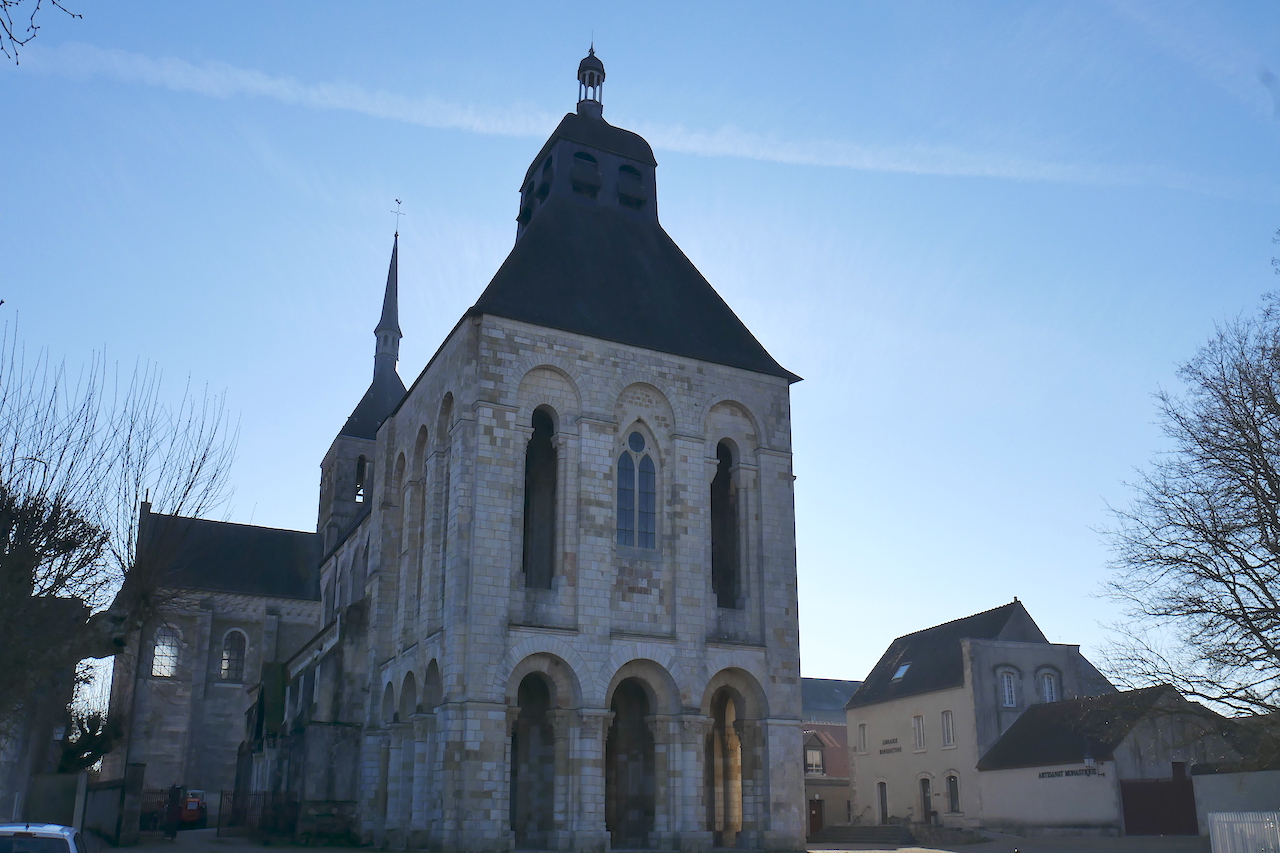
Centre-Val de Loire
1. Sully-sur-Loire to Châteauneuf-sur-Loire
Medium
6h30
25,9km
+177m
-178m
Step
Embed this item to access it offline
A day's walk that begins with a discovery of the Preserved Natural Site of Entre les Levées, then the Abbey of Fleury awaits you with its prestigious past, discover its history before making a small detour through the Carolingian oratory of Germigny-des-Prés to arrive in Châteauneuf-sur-Loire, its covered market and its castle overlooking the river.
6 points of interest
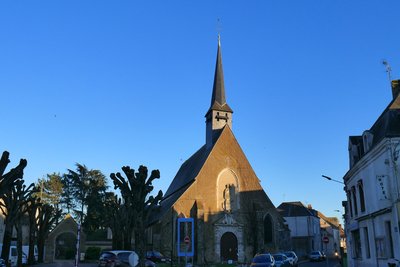
Église-collégiale St-Ythier de Sully-sur-Loire - Amis de saint Colomban TouristSaint-Ythier collegiate church in Sully-sur-Loire
Originally located in the forecourt of the castle, the collegiate church of Saint-Ythier was a seigneurial church served by the monks of Saint-Benoit-sur-Loire, to whom it was granted in 1137, then as a collegiate church in 1193. In 1608, Sully (of Protestant religion) had it dismantled and rebuilt on its present site.
The name of Saint Ythier remains attached to a miraculous navigation, because his remains were entrusted to the waves in a light boat that landed at Dampierre-en-Burly.
Inside, 16th century stained glass windows and 18th century furniture.
Place Maurice de Sully
Maurice de Sully was born around 1120 in Sully. The son of a peasant, he takes his name from the time when citizens who had no name were named after their hometown. After becoming a canon, he became bishop of Paris in 1160. He decided the construction of Notre-Dame de Paris and began work in 1163. His statue is displayed above the entrance porch of the church.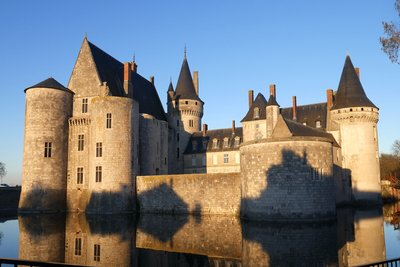
Coucher de soleil sur le château de Sully-sur-Loire - Amis de saint Colomban HistoricalThe castle of Sully-sur-Loire
This castle is the first of a long series that will accompany you throughout your peregrination on the banks of the Loire.
Rare are the castles which underwent as many architectural modifications as that of Sully-sur-Loire. The first traces of the castle were reported in 1102, it was then a defensive post on the left bank of the Loire.
In 1218, Philippe Auguste took advantage of a disagreement between the lord of the place and the bishop to briefly seize the place and build an imposing cylindrical tower, unfortunately disappeared. After a devastating flood in 1363, the castle changed family in the name of the marriage of the sole heiress to Guy de La Trémoïlle. The latter embarked on a major renovation project and asked the architect of the king and the Louvre, Raymond du Temple, to draw up new plans.
At that time, Joan of Arc stayed in Sully twice to visit King Charles VII, who was visiting the castle. From the 18th century, the castle of Sully-sur-Loire was the subject of many destructions and reconstructions that in turn changed its appearance.
To visit the castle of Sully-sur-Loire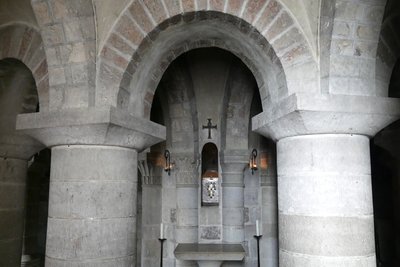
Crypte et reliquaire de Saint-Benoit - Amis de saint Colomban HistoricalThe Crypt of the Saint-Benoit Basilica in Saint-Benoit-sur-Loire
It was around the year 672 that the monks of Fleury formed an expedition to Mont-Cassin. There they found the relics of Saint Benedict, then abandoned. The monks repatriate them to Saint-Benoît-sur-Loire and it is then that a pilgrimage is formed in Fleury. The pilgrims will help the Abbey to develop through their many gifts.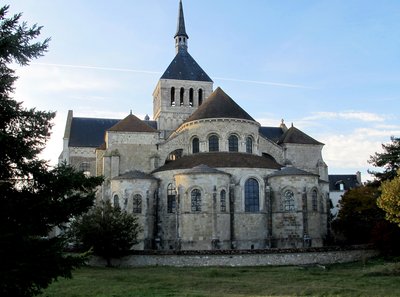
Basilique Saint-Benoit - Gilbertus Wikipédia St ColumbanSaint-Benoit Abbey in Saint-Benoit-sur-Loire
Between 630 and 650, double foundation under the patronage of St. Mary and St. Peter.
The first mention of a monastery living under the Rule of Saint Benedict appears in Gaul around 620 in a letter addressed to the Bishop of Albi by the abbot of a monastery near Castres. Shortly afterwards, a few monks settled on the north bank of the Loire, 30 km upstream from Orléans, on a small hillock near the village of Fleury, and built a church dedicated to Notre Dame, while a second colony of monks settled a hundred metres further on, around a church of Saint Peter. At that time these communities shared, according to the custom of the monastic foundations located in northern Gaul, a mixed rule known as that of the good fathers Benedict and Colomban.
The two communities soon merged and the monastery is now known as Saint-Pierre de Fleury.
In the 10th century, under the Abbot of Abbon, Fleury reached the height of its influence. Abbon is considered by his contemporaries as the most educated man of his time, his literary and scientific work is vast and he knows how to discern and promote the literary gifts of his monks.
The monastery will be occupied by the monks until the French Revolution, when they will be expelled. The Abbey is then sold as national property and abandoned. It was only in 1944 that the Abbey of Fleury regained its religious activity when the monastic community reoccupied the premises.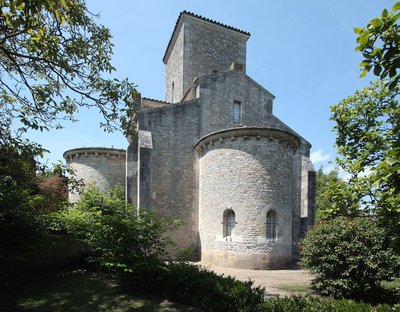
Chevet de l’oratoire de Germiny-des-Prés - Manfred Heyde ®-2007 TouristOratory of Germigny-des-Prés
On this site was built in 806 the villa of Theodulfus, bishop of Orleans, abbot of St. Benoit and intimate adviser to Emperor Charlemagne, of which only the oratory remains today.
Theodulph, Goth by birth, was one of the best minds of his time. A highly educated poet and art lover, he was interested in all the branches of knowledge of that time. This is undoubtedly what made him one of the most eminent missi-dominici of Emperor Charlemagne, before falling into disgrace and dying in a prison in Angers in 820.
This building with a square plan and four leaves is gathered around a lantern tower. During its restoration in the 19th century two absidioles were destroyed.
Inside this oratory, in the eastern apse is a vault, decorated with a mosaic unique in France, in cul de four, dating from the 9th century. On each side two angels representing the Jewish people the Christian people and two cherubs carry the Ark of the Covenant.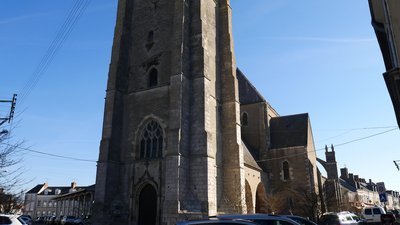
Église Saint-Martial à Châteauneuf-sur-Loire - Amis de saint Colomban TouristSaint-Martial Church in Châteauneuf-sur-Loire
In the middle of the 12th century, the parish church dedicated to Saint Martial, located in La Ronce, was transferred to its present location. From destruction to reconstruction, it has been profoundly transformed over the centuries. With its eventful history, the church of Saint-Martial is a prime witness to the history of Châteauneuf-sur-Loire. Listed as a historic monument in France, this Romanesque building is full of treasures: the Gothic tomb of the Marquis de la Vrillière, the organ and its chamade pipes, the polychrome wooden statue of the Virgin and Child...
More information : Tourism Loiret
Description
Leave the centre of Sully-sur-Loire to cross the Loire and take the path on the left along the Loire at the exit of the bridge. Stay on the dirt road to avoid walking on the D60.
- At 8 km from the bridge of Sully-sur-Loire after the greenhouses take the road on the right towards St-Benoit-Sur-Loire, always straight on route de Braudrins.
- Carrefour route de Braudrins on the left, rue Jean de Fleury then first left, avenue Célestin Chateigner, the abbey church is on your left.
- Carrefour avenue Célestin Chateigner, on the right then second on the left, rue Orléanaise (D 60)
- After the last houses of Saint-Benoit-sur-Loire take the path that runs along the D 60 on the right, continue on the path through the Boutrons,
- At Le Marais, take the D 60 for a few dozen metres to turn left on the Loire River to follow the Loire up to the Châteauneuf-sur-Loire bridge.
- At the roundabout before the bridge take the second street on the right, Grande rue du Port which turns right and you arrive in front of the church.
- Departure : Saint-Ythier Church, Place Maurice Sully, 45600-Sully-sur-Loire
- Arrival : Saint-Martial Church, 12 Rue Migneron, 45110 Châteauneuf-sur-Loire
- Towns crossed : Centre-Val de Loire
Altimetric profile
Transport
Report a problem or an error
If you have found an error on this page or if you have noticed any problems during your hike, please report them to us here:







